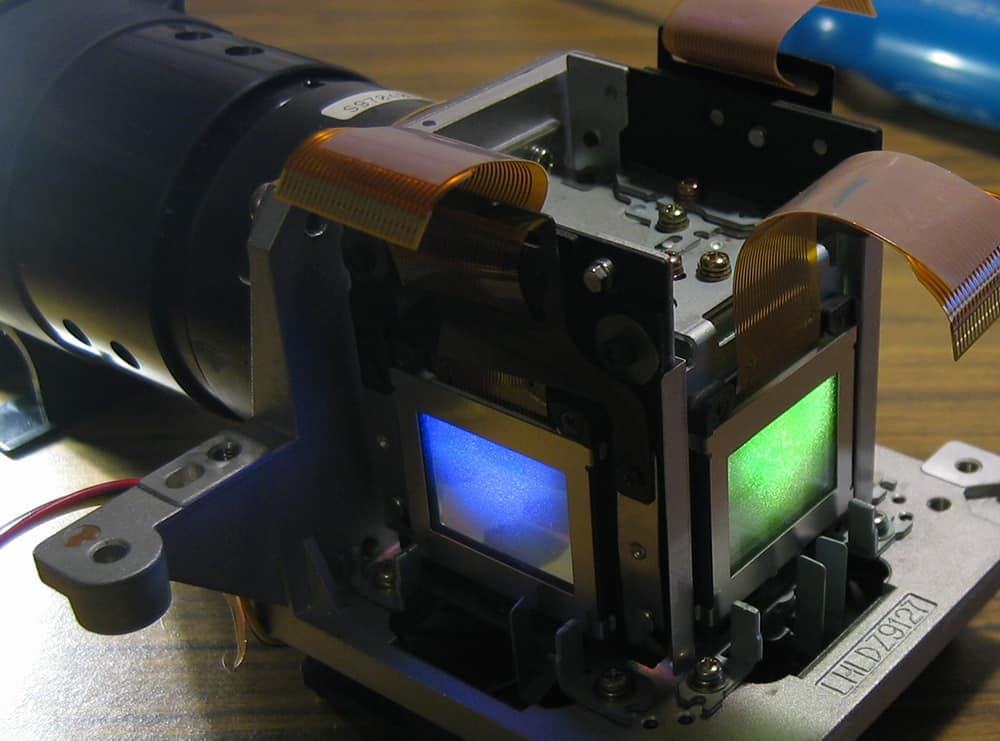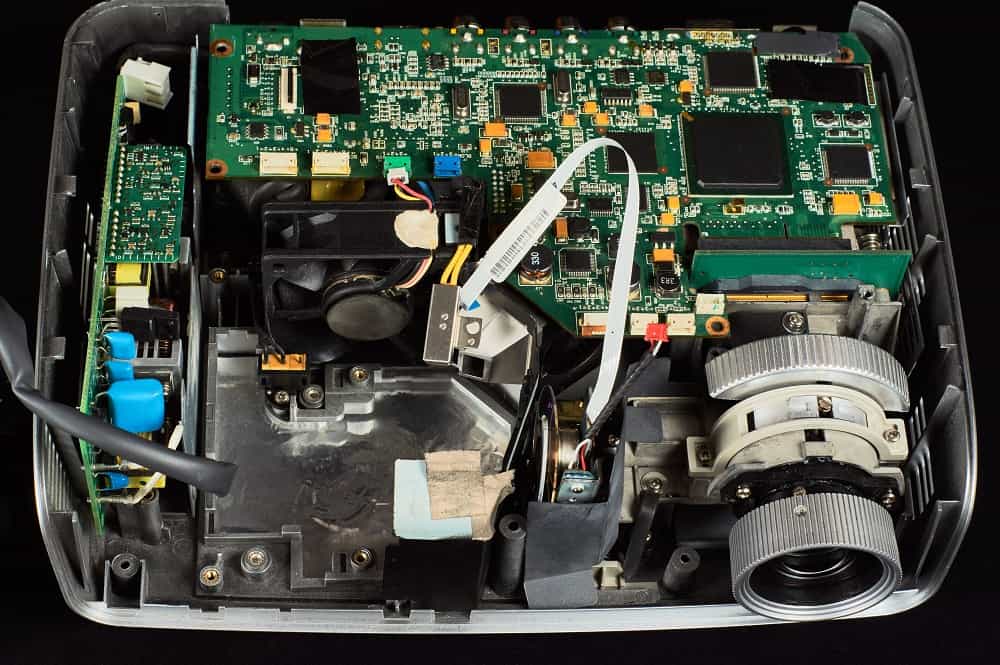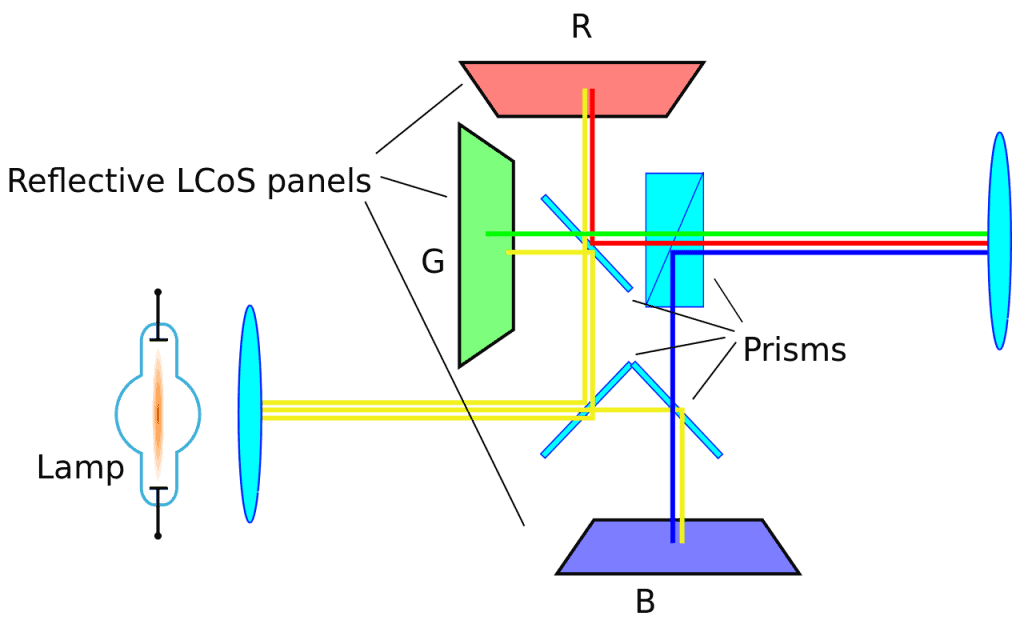If the time has come to choose a projector, it is easy to get bogged down by all the jargon and specifications. However, your choice is really dependent on two factors: viewing requirements and room size.
The first consideration are your viewing requirements; is it mostly for movie screenings, outdoor use, gaming, or professional presentation use?
The second factor is room size to ascertain whether you need a short-throw or long-throw projector.
There are three main types of projector, each categorized by the image projection mechanism. Liquid-crystal display, Digital Light Processing, and Liquid Crystal on Silicone devices have individual sets of specifications designed to suit particular applications and budgets.

LCD projectors were once the go-to model, but as Digital Light Processing (DLP) and Liquid Crystal on Silicone LCoS gain popularity, fewer LCDs are sold.
They operate using three LCD glass panels that project the same image simultaneously. Light from a lamp or LED splits the light into red, blue, and green wavelengths using a series of angled dichroic mirrors.
Each beam hits a separate LCD panel producing three different colored variations of the same image.
Light from the panels combine and, using a prism, reproduces the image at the main lens.
They are the most light efficient of all types of projectors, emitting brighter images even with the identical lumen rating as their contemporaries.
The contrast ratio of an LCD model is good, higher than that of some DLP projectors. It is another factor that contributes to light, bright images. Its downfall comes in the darker ranges where shadows aren't as detailed as expected, and rich blacks are instead hazy grays.

DLP projectors utilize a Digital Micro-mirror Device (DMD) that contains over one million of the tiniest mirrors imaginable. Each one sits on a hinge allowing it to reflect or block light from the screen. Each mirror represents a single pixel of the video.
The color comes from a spinning wheel that filters light from the lamp which, in turn, is reflected by the mirrors.
The most common type of DLP projector is known as the single-chip. Regularly found in home theaters, they are capable of full HD 16:9 aspect ratio and 1920 x 1080 pixel resolution (a must for front projections and large screens)
DLP projector images are sharp and very bright; They can reproduce 3D images to a very high standard. The contrast of black shades isn't always the best and can occasionally appear muddied.

LCoS projectors are a relatively new technology; they combine the best of LCD and DLP, resulting in a superb hybrid.
Like their LCD counterparts, they separate light into red, blue, and green components before directing it to LCD panels. Instead of passing through each one, the light reflects against the shiny LCoS surface behind, back through the cells.
The light source is typically a white lamp, but some models employ a blue laser with a yellow phosphor wheel as the light source.
Both styles behave in the same manner; the reflected light from the images combines in a prism and projects through the primary lens.
The clarity of an image directly relates to the number of pixels in a given area. The greater the number of pixels results in a more precise projection.
Keep in mind, viewing distance matters.
For example a screen size of 50 inches at a viewing distance of 15 feet. Resolutions of 4k, 1080p, 720p, and 480p are equivalent to the naked eye.
The contrast ratio relates to the comparison between the whitest whites and the darkest darks in an image; Ambient light in a room affects the contrast on a screen.
The best projectors offer a ratio of at least 1000:1; the whitest areas are 1000 times brighter than the darkest areas.
Measured in lumens (lm), the higher the lm rating, the brighter the projected image.
As a rule of thumb, in a dark room, such as a home movie theater with no ambient light, 1000lm is sufficient.
For an outdoor screen or a room with lots of flooded doors and window light, we recommend a projector with at least a 3000lm rating.
Short throw projectors suit small rooms as they only need to be 3-feet away from the projection screen.
Large throw projectors, the most common type, are best suited to large spaces as they operate from a distance of at least 6-feet.
Read More: The Difference Between Short Throw and Long Throw Projectors
The best type of projector is very much governed by your requirements and available budget.
If you plan on using it solely for screening movies, then an LCD model will suit your needs. DLP projectors are the most affordable type and are multi-purpose. LCoS projectors produce the best picture quality but at a greater cost.
All types of projectors suit differing budgets; a high-end DLP model projects better videos than a bargain-basement LCD model; it is all about finding the best trade-off.
References
